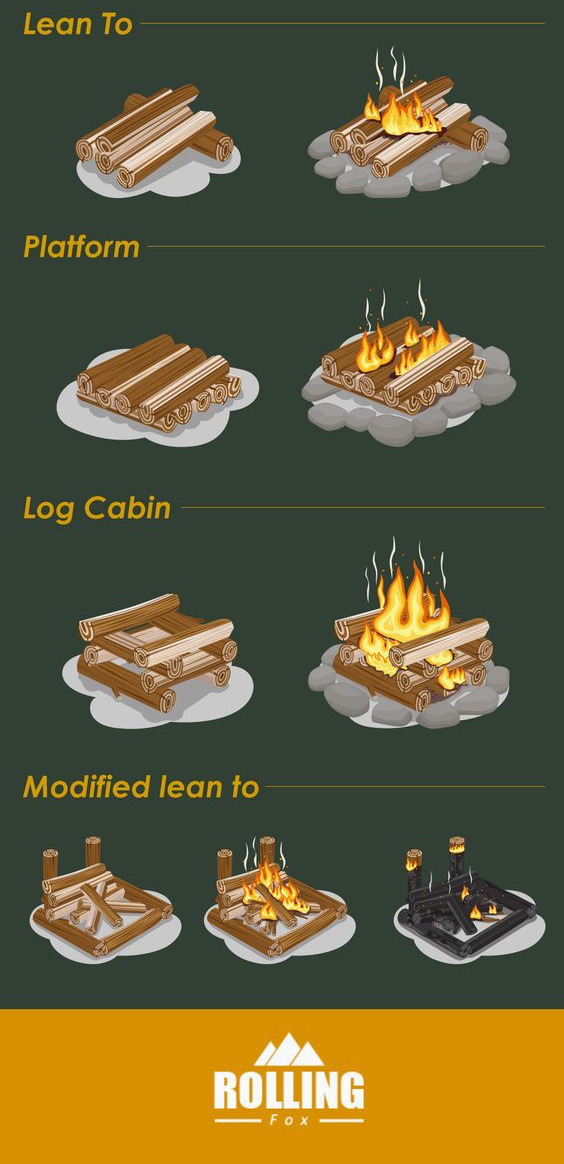Don't wanna be here? Send us removal request.
Text
Download this easy DIY clothing repair guide (only 10 pages) from Uni of Kentucky
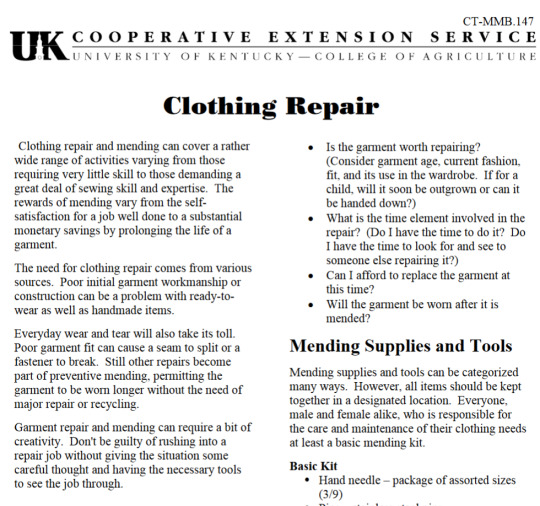
link to PDF
82K notes
·
View notes
Text
Hey kid you want a job?
Great get online and go to a job board. Indeed, Linkedin whatever. Now you're gonna search for a role that's in your city, fits your qualifications, and doesn't seem like a bad time.
See that easy apply button? Don't hit it they just throw those in the trash. Now you're gonna want to go to the company's website and check their careers page.
Oh? That job doesn't exist anymore. Cool go back to the job board and find another one.
Great you found another job, you're on the company's career page and the job exists!! So you're going to need to make an account on the career page website. They're using Workday, the same site as the last job you applied for? Who cares? You need to make another account for THIS job's workday page.
Now you're going to upload your resume. That'll autopopulate about 15 boxes with everything on your resume, except formatted wrong and with tons of errors. So just go through and painstakingly check the dates on all of that and rewrite everything you already laid out in an aesthetically pleasing format on your resume.
Ok time for the cover letter, explain why this specific job and company are deeply important to you. You love their mission statement and wouldn't even laugh if their ceo was gunned down in the street. You'll really want to reiterate the things you just spent the last 20 minutes filling out on the resume section
(Remember to include language from the job description, people who work in HR are lower than dogs and they need patterns or they get confused.) Write about a page, but hey don't sound too desperate or robotic this is where they judge your character!
Maybe add your portfolio site at the end here, who knows if that helps no one has ever clicked mine haha.
Anywayyy time to hit apply! Congrats! You'll see that confirmation email come in and you should be getting the rejection letter in about 2 weeks. Unfortunately your resume didn't have the right buzzwords and the AI auto rejected you :(
Time to start again and try not to kill yourself!
89K notes
·
View notes
Text
Tabby Genetics Guide
hi hi, so i noticed some people have trouble with identifying/understanding how the tabby gene works, so i thought i would make an easy guide for you!!
*Note - all red cats are tabbies. There is no such thing as a “solid” red or cream cat. If a red/cream cat appears solid, it is because they are a ticked tabby.
There are, in essence, 2 tabby patterns - Mackerel (tiger stripes) and Classic (blotched). The other tabby patterns seen in cats are gene modifiers that affect the tabby gene and change it.
Most dominant to most recessive -
Ticked
Spotted
Mackerel
Classic
Ticked Tabbies
The color on the hair shafts alternates, giving these cats a “salt-and-pepper” look. The ticking gene “masks” the regular tabby gene on the body, which is why ticked tabbies still have stripes on their face, tail, and legs - these are called residual markings.

Agouti Tabby
If a kit inherits 2 copies of the ticking gene (meaning both parents are ticked), then they will NOT have the residual markings. These cats will have a light underside and dark back/body. This is most evident in breeds like the Somali, Abyssinian, and Singapura!
(this kitty has the black ticking along her spine, forehead and tail, but doesn’t have any tabby stripes!)

Charcoal Tabby
The charcoal tabby is a wild variation of the agouti gene that causes a random distribution of black on the pelt. Charcoal tabbies are most common in the Bengal & Savannah breeds, and they have very distinct facial markings. NOT to be confused with smoke tabbies. The tabby gene usually shows through the ticking, although the ticking is still evident.

Spotted Tabbies
The spotted tabby gene “breaks up” the tabby pattern into spots. These spots follow the fur direction and can vary in size. Since this gene “modifies” the regular tabby gene, these kitties still have horizontal stripes on their legs, tail and face. This tabby type is pretty common and is seen most in the Ocicat, Egyptian Mau and British Shorthair!

Rosetted Tabby
There are many different variations of the rosette gene (arrow, pawprint, donut, cloud). This is a spotted tabby with the agouti gene, which causes the hairs in the center to be lighter and ticked. These markings look like leopard spots and are almost exclusive to the Bengal breed.

Mackerel Tabby
This is the most common and familiar tabby type. This is also the “default” tabby type. These kitties have “tiger stripes” on their body. Stripes can vary in closeness and size by individual

Broken Mackerel Tabby
These mackerel tabbies stripes break and sometimes form “spots” or bars, but don’t be fooled - this is still a mackerel tabby. These tabbies are also very common
(see how the stripes break up into spots on the shoulder and near the stomach??)

Braided Tabby
In the Toyger breed, the mackerel tabby gene has been modified to create thicker and more wavering lines to resemble a tiger. This is called “candle-flame” or braided.

Classic Tabby
This is the recessive form of the mackerel tabby, and is also pretty common. The classic tabby markings will spiral and create big blotches of pattern on the body. An ideal classic tabby has a “bulls-eye spiral” on their side and is most often seen in the Maine Coon or British Shorthair!

Marbled Tabby
Sometimes also called a Clouded Tabby, these cats are a modified version of the classic tabby. Agouti (ticked) hairs appear in the center of the tabby stripes, usually in the bulls-eye, which gives them a two-toned tabby look. This is evident in breeds like the Bengal and Sokoke!

OTHER TABBY PATTERNS
Lynx Point
This is a colorpoint cat with the tabby gene. Colorpoints have partial-albinism that causes the cooler parts of their body to develop color, such as the face, tail and legs. These tabbies can come in any of the other tabby patterns ^ and paired with the colorpoint gene. These cats will display tabby markings where there is pigment.

Torbie / Tabico / Caliby
This is a tabby-tortie, or tabby-calico. These cats are also sometimes called patched tabbies. They can come in any tabby variation ^ . These cats display two or 3 colors (black & red, blue & cream, chocolate, cream & white etc) and also have the tabby gene. These can sometimes be hard to identify against regular tabbies because the colors can blend and mix to be almost indistinguishable. They will carry the same tabby marking all over

Smoke Tabby
This is a tabby cat with the smoke gene. The smoke gene is a variation of silver, where the roots of the hair are pigmentless. These cats usually have a dark face mask and darker paws and tail. They can come in any tabby pattern
(black smoke tabby vs black silver tabby)

10K notes
·
View notes
Photo


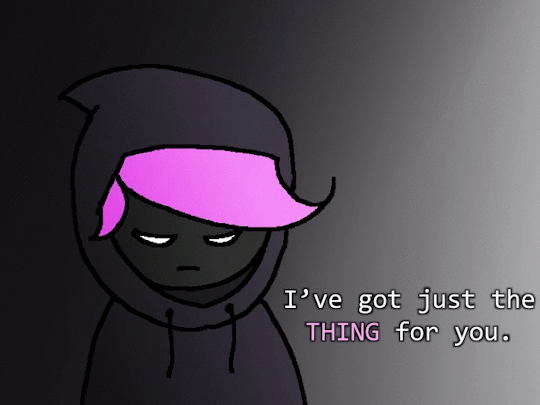
So, let me guess– you just started a new book, right? And you’re stumped. You have no idea how much an AK47 goes for nowadays. I get ya, cousin. Tough world we live in. A writer’s gotta know, but them NSA hounds are after ya 24/7. I know, cousin, I know. If there was only a way to find out all of this rather edgy information without getting yourself in trouble…
You’re in luck, cousin. I have just the thing for ya.
It’s called Havocscope. It’s got information and prices for all sorts of edgy information. Ever wondered how much cocaine costs by the gram, or how much a kidney sells for, or (worst of all) how much it costs to hire an assassin?
I got your back, cousin. Just head over to Havocscope.
((PS: In case you’re wondering, Havocscope is a database full of information regarding the criminal underworld. The information you will find there has been taken from newspapers and police reports. It’s perfectly legal, no need to worry about the NSA hounds, cousin ;p))
Want more writerly content? Follow maxkirin.tumblr.com!
451K notes
·
View notes
Text
Something that I get chills about is the fact that the oldest story told made by the oldest civilization opens with "In those days, in those distant days, in those ancient nights."
This confirms that there is a civilization older than the Sumerians that we have yet to find
Some people get existential dread from this
Me? I think it's fucking awesome it shows just how much of this world we have yet to discover and that is just fascinating
71K notes
·
View notes
Text
“Meatless alternatives are getting so good, you should try them! I bet you wouldn’t even be able to tell the difference! In fact….”






Please
Please
Please stop trying to sneak-feed me meat alternatives.
I am willing to prepare and share a vegan meal with you, I’m willing to skip animal products in our group spaces.
Please.
Stop trying to sneak-feed me meat alternatives.
36K notes
·
View notes
Photo


Derweze, also known as the door to hell, is a 70 meter wide hole in the middle of the Karakum desert in Turkmenistan. The hole was formed in 1971 when a team of soviet geologists had their drilling rig collapse when they hit a cavern filled with natural gas. In an attempt to avoid poisonous discharge, they decided to burn it off, thinking that the gas would be depleted in only a few days. Derweze is still burning today
20K notes
·
View notes
Text
woke up and someone spilled vanilla extract all over my dash, so as punishment you strange little beasties are getting all the VANILLA FACTS i know:
vanilla is the 2nd most expensive spice in the world (2nd to saffron)
which is why more than 99% of what we call "vanilla extract" is actually vanillin (vanilla's dominant flavor compound) and is not extracted from real vanilla.
luckily, even professionals struggle to tell the difference when it comes to things like baked goods. but there is a distinct difference in non-heat treated products like vanilla ice cream. real vanilla has a more complex, individualized flavor profile.
why is vanilla so expensive? because it is a ridiculously delicate & demanding crop. complete primadonna.
vanilla beans come from vanilla orchids. these crazy flowers bloom for A SINGLE DAY and have to be HAND-POLLINATED in a process that is exhausting, delicate, and requires specialist knowledge passed down over generations.
then, if you're lucky, you get vanilla beans.
which then require months of further specialized treatment.
the entire process takes about a year and can go wrong at any stage

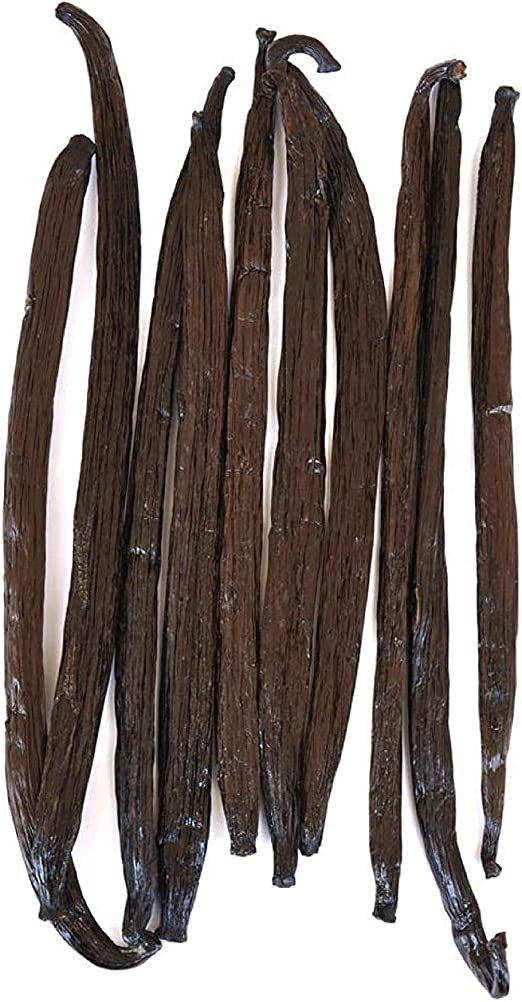
vanilla has been cultivated for over 800 years (possibly much longer). the first known cultivators are the Totonac, an indigenous people of Mexico.
the Aztecs used it as a sweetener to balance out the bitter taste of cocoa. it was popular in a drink called xocolatl--the precursor to modern hot chocolate!
it is only pollinated by a very specific orchid bee!!!
which is why no fruit could be grown outside of Mexico until the 1800s
Edmond Albius, born into slavery, invented the pollination method we still use today--launching a global industry when he was just 12 years old.
today, the majority of the world's vanilla is grown in Madagascar
if you want real vanilla, read the labels carefully--it's harder to find than you think!

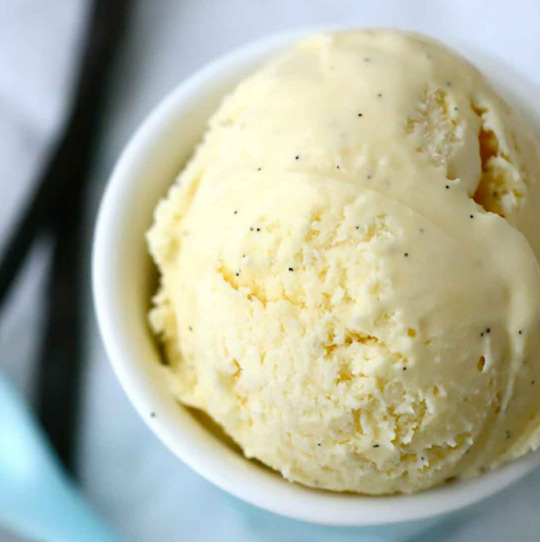

in conclusion, those tiny black specks you see in fancy vanilla ice cream? those are vanilla bean seeds! itty bitty orchid seeds!!! they are delicious and also a PRISSY BITCH!
(src)
71K notes
·
View notes
Text
i dont consider myself a 'fashion guru' by any means but one thing i will say is guys you dont need to know the specific brand an item you like is - you need to know what the item is called. very rarely does a brand matter, but knowing that pair of pants is called 'cargo' vs 'boot cut' or the names of dress styles is going to help you find clothes you like WAAAYYYY faster than brand shopping
181K notes
·
View notes
Text
"Once thought to be extinct, black-footed ferrets are the only ferret native to North America, and are making a comeback, thanks to the tireless efforts of conservationists.
Captive breeding, habitat restoration, and wildlife reintegration have all played a major role in bringing populations into the hundreds after near total extinction.
But one other key development has been genetic cloning.
In April [2024], the United States Fish and Wildlife Service announced the cloning of two black-footed ferrets from preserved tissue samples, the second and third ferret clones in history, following the birth of the first clone in December 2020.
Cloning is a tactic to preserve the health of species, as all living black-footed ferrets come from just seven wild-caught descendants. This means their genetic diversity is extremely limited and opens them up to greater risks of disease and genetic abnormalities.
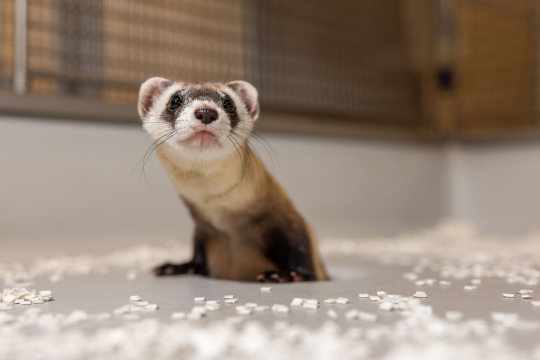
Now, a new breakthrough has been made.
Antonia, a black-footed ferret cloned from the DNA of a ferret that lived in the 1980s has successfully birthed two healthy kits of her own: Sibert and Red Cloud.
These babies mark the first successful live births from a cloned endangered species — and is a milestone for the country’s ferret recovery program.
The kits are now three months old, and mother Antonia is helping to raise them — and expand their gene pool.
In fact, Antonia’s offspring have three times the genetic diversity of any other living ferrets that have come from the original seven ancestors.

Researchers believe that expanded genetic diversity could help grow the ferrets’ population and help prime them to recover from ongoing diseases that have been massively detrimental to the species, including sylvatic plague and canine distemper.
“The successful breeding and subsequent birth of Antonia's kits marks a major milestone in endangered species conservation,” said Paul Marinari, senior curator at the Smithsonian’s National Zoo and Conservation Biology Institute.
“The many partners in the Black-footed Ferret Recovery Program continue their innovative and inspirational efforts to save this species and be a model for other conservation programs across the globe.”
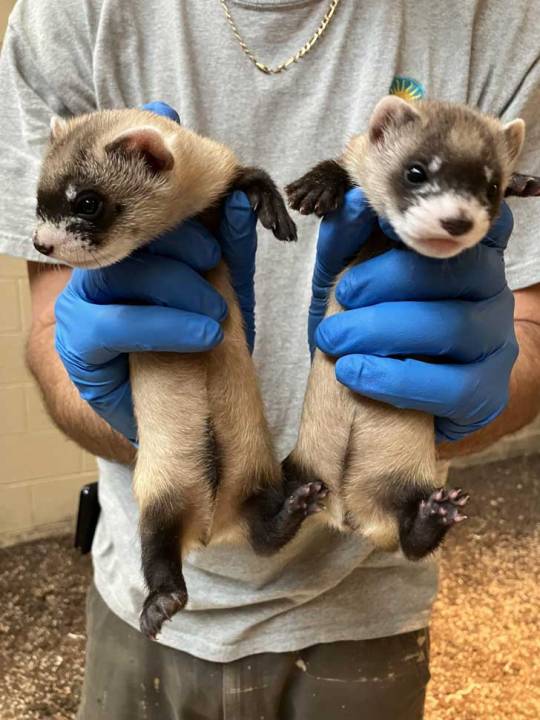
Antonia actually gave birth to three kits, after mating with Urchin, a 3-year-old male ferret. One of the three kits passed away shortly after birth, but one male and one female are in good health and meeting developmental milestones, according to the Smithsonian.
Mom and babies will remain at the facility for further research, with no plans to release them into the wild.
According to the Colorado Sun, another cloned ferret, Noreen, is also a potential mom in the cloning-breeding program. The original cloned ferret, Elizabeth Ann, is doing well at the recovery program in Colorado, but does not have the capabilities to breed.
Antonia, who was cloned using the DNA of a black-footed ferret named Willa, has now solidified Willa’s place as the eighth founding ancestor of all current living ferrets.
“By doing this, we’ve actually added an eighth founder,” said Tina Jackson, black-footed ferret recovery coordinator for the U.S. Fish and Wildlife Service, in an interview with the Colorado Sun.
“And in some ways that may not sound like a lot, but in this genetic world, that is huge.”

Along with the USFWS and Smithsonian, conservation organization Revive & Restore has also enabled the use of biotechnologies in conservation practice. Co-founder and executive director Ryan Phelan is thrilled to welcome these two new kits to the black-footed ferret family.
“For the first time, we can definitively say that cloning contributed meaningful genetic variation back into a breeding population,” he said in a statement.
“As these kits move forward in the breeding program, the impact of this work will multiply, building a more robust and resilient population over time.”"
-via GoodGoodGood, November 4, 2024
10K notes
·
View notes
Link
46K notes
·
View notes
Text
the most disorienting thing thats ever happened to me was when a linguistics major stopped in the middle of our conversation, looked me in the eye, and said, "you have a very interesting vernacular. were you on tumblr in 2014?" and i had to just stand there and process that one for a good ten seconds
253K notes
·
View notes


